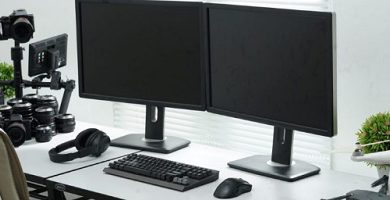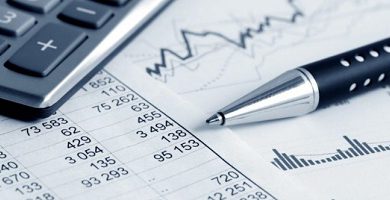what are tectonic plates?
We explain what tectonic plates are, their types and which are the main ones. Also, what happens when they move and collide.
-
what are tectonic plates?
Tectonic plates or lithospheric plates are the different fragments in which the Earth’s lithosphere is divided , that is, the most superficial layer of the planet, where the crust and the upper part of the Earth’s mantle are included . At its edges, seismic, volcanic and orogenic activity is concentrated.
The latter is due to the fact that tectonic plates are in constant motion over the asthenosphere , a more or less viscous area of the upper mantle, in accordance with what is established in the theory of plate tectonics.
Not much is known today about the nature of tectonic plates, beyond that they are rigid and that their displacements produce geological phenomena whose impact we can measure and know, such as earthquakes and earthquakes , volcanoes . They can even cause the genesis of mountain ranges and sedimentary basins. This is an active phenomenon only on planet Earth . However, there is evidence that other planets once had similar tectonic phenomena.
The theory of plate tectonics, which explains these phenomena, was formulated between 1960 and 1970, and is the result of more than two centuries of geophysical and geochemical observations, as well as the often undecipherable findings of the fossil and geological record . It was formulated based on the theory of continental drift developed in 1912 by the German Alfred Wegener (1880-1930).
-
Types of tectonic plates
There are two types of tectonic plates in the world: oceanic and continental.
- Oceanic plates . Those completely covered by the oceanic crust, that is, the ocean floor , so that they are submerged to the full extent. They are thin, composed mainly of iron and magnesium.
- Continental plates . Those partially covered by the continental crust, that is, by the continents themselves, are the most predominant type of tectonic plate and generally have a continental part and another submerged in the water of the seas .
-
Main tectonic plates
In total, our planet has 56 tectonic plates, of which 14 would be the most important. These are:
- The African plate . It covers the entire African continent and extends to the ocean around it, except in its northern zone.
- Antarctic plate . It covers Antarctica completely, then spreading through the surrounding oceans along its nearly 17 million square kilometers.
- Arabic plate . It is located under the Arabian peninsula and part of the so-called Middle East, comes from a fracture of the African plate and saves 43% of the gas reserves and 48% of the world’s oil reserves .
- The coconuts plate . It underlies the Pacific Ocean in the region of the western coast of Central America, right next to the Caribbean plate, under which it forms the volcanic arches of the Central American region.
- The Nazca plate . Located under the eastern Pacific Ocean, off the coast of Peru, Ecuador and Colombia, as well as the central and northern regions of Chile, it is subducted to the South American plate, thus forming the Andes mountain range.
- Juan de Fuca’s plate . A small plate located on the western side of the North American plate, on the Pacific coast of the states California, Oregon, Washington and British Columbia. This, next to the Cocos plate and the Nazca plate, comes from the disintegration of the old Farallón plate about 28 million years ago.
- The Caribbean plate . As the name implies, it is located in the Caribbean region, north of South America and east of Central America, covering 3.2 million square kilometers. It covers a Central American continental portion (Guatemala, Belize, Honduras, Nicaragua, El Salvador, Costa Rica, Panama and the Mexican state of Chiapas), as well as all the islands of the Caribbean Sea.
- The Pacific plate . One of the largest on the planet, covers almost the entire ocean of the same name, and has numerous “hot spots” and seismic or volcanic areas, especially towards Hawaii.
- The Eurasian plate . Covering a territory of 67,800,000 square kilometers, this huge plate covers all of Eurasia (entire Europe and Asia), with the exception of the Indian subcontinent, Arabia and part of Siberia. It also extends several kilometers over the eastern part of the North Atlantic Ocean.
- The Philippine plate. Located in the Pacific Ocean, east of the Philippines, it is a subduction plate just in the Mariana Trench region. It is quite small compared to its neighbors.
- The Indo-Australian plate . As the name suggests, this plaque extends from the border of India with China and Nepal, along the entire Indian subcontinent, the Indian Ocean and all of Australia and Melanesia, culminating in New Zealand. It is the result of the merger of the old Indian and Australian plates about 50 million years ago.
- US plate . North America sits in its entirety, including Greenland, as well as the archipelagos of Cuba, The Bahamas, half of Iceland, and part of the North Atlantic, Arctic Glacier and Siberian territory oceans. It is the largest plate on the planet.
- Scotia’s plate . Located at the junction of the Pacific, Atlantic and Antarctic Glaciers, south of South America. It is a small and relatively recent plaque, born in the Cenozoic. It has an intense seismic and volcanic activity.
- The South American plate . Just like the continent with which it shares its name, this plate is below the whole of South America, also extending south-east towards the South Atlantic Ocean.
-
Map of tectonic plates

-
Tectonic plate movements
Tectonic plates move over the Asthenosphere, the fluid portion of the earth’s mantle. They move at different speeds , generally slow, but constant, so that they are imperceptible, except when they collide with others and then we perceive the seismic waves of impact.
These movements are due to factors that are not yet clear, but that could have to do with the earth’s rotation, with the displacement of the warm magma upwards and the cold towards the bottom, or even the differences in gravitational forces and density of the planetary cortex.
However, the movements are produced as part of the dynamics of the earth’s mantle , where there are currents of convection and heat distribution , which allows matter to remain in a semi-solid state and the denser and heavier elements descend, opening space for the lightest.
-
Crash of tectonic plates

Eventually, tectonic plates collide with each other at their limits, where the so-called “tectonic faults” or other similar geological phenomena usually occur. For example:
- Tremors and earthquakes have to do with the waves generated by the friction of the plates and their transmission through different layers of materials.
- The mountainous formations are due to folds and distortions of the tectonic plates, by exerting resistance against each other in a frontal way, preventing their displacement and forcing a deformation.
- The volcanoes are due to the subduction of a tectonic plate below another, that is, that one is introduced below the other, penetrating the mantle and therefore coming into contact with the boiling magma, whose excess rock liquid will then be expelled in the form of rashes.





